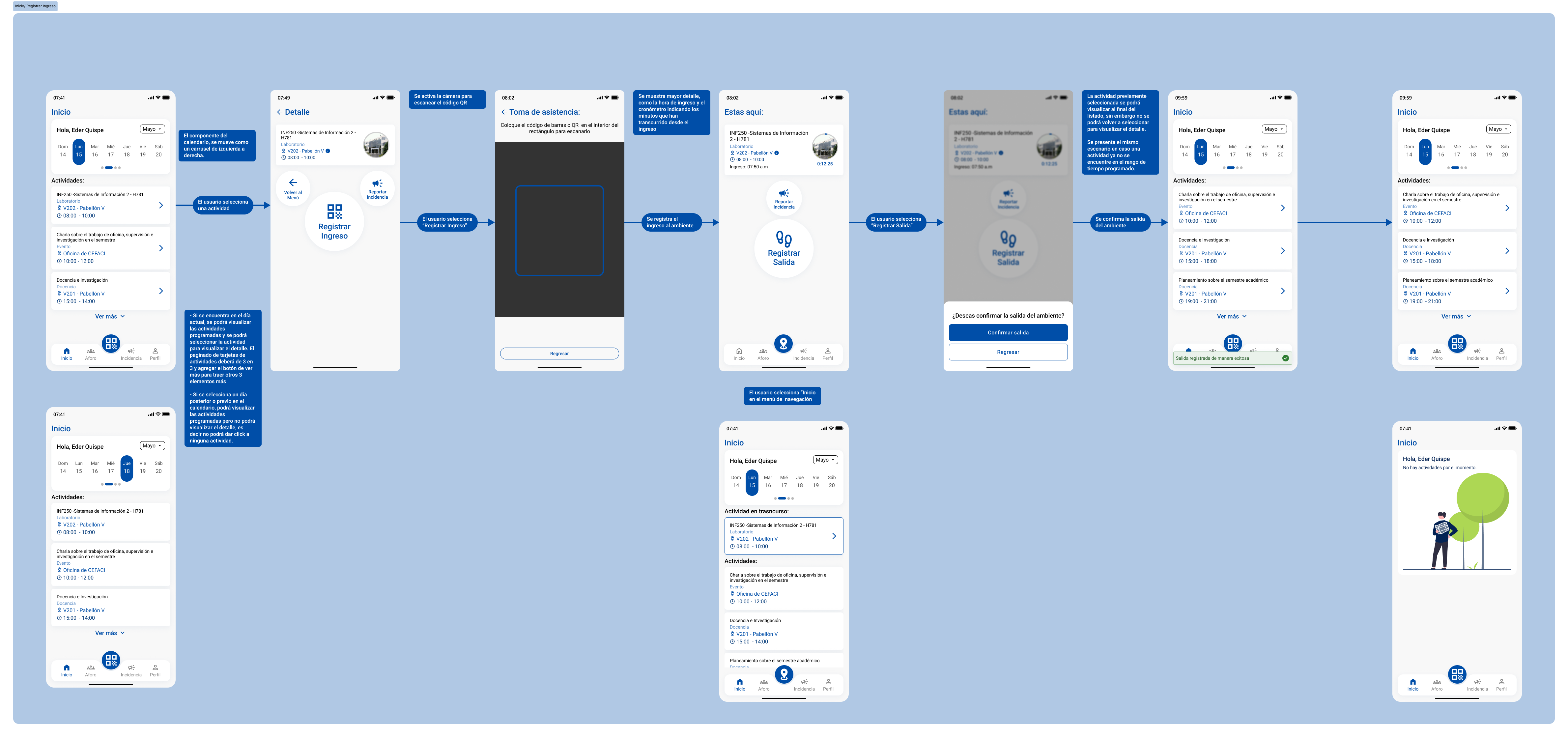pucp - in
Project Overview:
PUCP-IN was developed to efficiently manage attendee check-ins for events held at the PUCP, including the Open PUCP and other academic and external events. The platform allows users to view available events in real-time, optimizing occupancy control and facilitating the admission of external participants to university-hosted events. The system also allows organizers to create and manage events, assign rooms, and keep an accurate record of participants.
Role in the Project:
I was responsible for the end-to-end UX/UI design of the system, collaborating closely with the development team. My responsibilities included designing the interfaces for the event check-in platform and an administrative system for managing events, participants, and spaces.
Design Process:
- I employed Design Thinking methodologies to define and prioritize key problems, conduct research, and create iterative prototypes.
- Field interviews were conducted with users during the initial versions of the system at internal events, such as faculty meetings, to gather direct feedback and improve usability before rolling out the system for larger-scale events.
- Usability tests were conducted on early prototypes using Figma to validate user flows and interactions.
Key Challenges:
Some of the main challenges encountered during the project included:
- Ensuring accurate occupancy control for simultaneous events.
- Designing an intuitive interface for staff conducting check-ins, making the tools accessible to non-technical users.
- Reducing the time needed for attendees to register for multiple events.
- Facilitating the inclusion of external participants without PUCP credentials.
- Implementing clear and helpful error messages to prevent confusion during the registration process.
- Preventing duplicate registrations by creating an advanced search system for participants by name and ID.
- Ensuring visual and functional consistency with the PUCP’s Style Guide, by adapting a Design System for specific components.
- Offering flexibility for real-time event updates and modifications while events were ongoing.
- Optimizing the event management workflow for organizers by providing differentiated access based on user roles.
- Adapting the platform to accommodate different types of events, from small internal meetings to large international conferences.
Results:
- The platform completely eliminated the need for paper during the registration and check-in process.
- Users can now see which events are available before arriving at the university, avoiding confusion with simultaneous events held in different rooms or floors.
- The system has been successfully used in multiple events, both internal and international, and remains in use today.
- The optimized design of the interface and workflow significantly improved the user experience, reducing wait times and simplifying event management for organizers.
Impact: The tool not only optimized event entry and occupancy control but also enhanced the participant experience by providing clear, real-time information on available events. Additionally, it streamlined management for university administrators, giving them full control over event creation and monitoring. The platform continues to be a key asset in managing events at PUCP.


